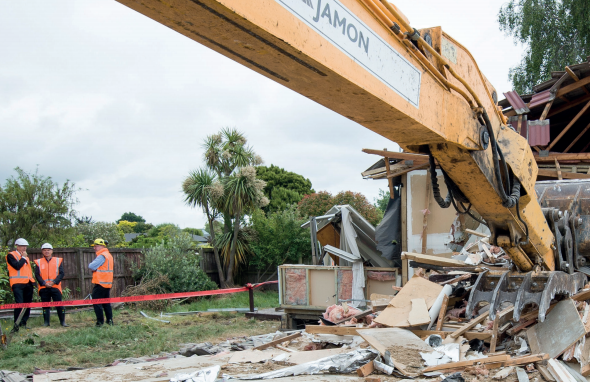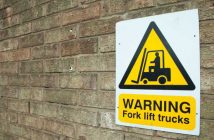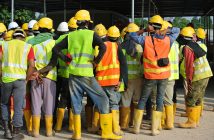Worksafe is looking what was developed and learnt from the rebuild programme that can be applied on building sites around the country.

Overall, the Canterbury Rebuild programme was implemented as intended.
The programme has shown achievement of most of its short- and medium-term outcomes, according to an evaluation report Rebuilding Canterbury, healthy and safe released recently.
The report says that all activities the programme had planned to undertake were implemented as intended, with the exception of work with “at risk” workers.
There were some initiatives developed for at risk workers that were not implemented as originally intended and this had a negative impact on the achievement of outcomes reliant on this work-stream.
The Canterbury Safety Charter was a significant part of the success of the Programme, creating a unified front on health and safety across the rebuild.
The evaluation found the programme had provided the inspectorate with the necessary tools to engage, educate and enforce.
There was evidence that industry businesses are aware of their obligations and the consequences of not meeting these. The HSAB survey results showed the Canterbury construction firms were much more confident in their level of awareness of health and safety obligations and how to meet them than construction firms in the rest of New Zealand.
Industry workers also appear to be more aware of their rights and obligations in Canterbury than in the rest of New Zealand.
There have been zero fatalities on a Canterbury construction site since 1 January 2013, when the Programme started.
The Programme was funded and given priority by the Department of Labour, MBIE and WorkSafe in part because based on the estimated numbers of workers involved in the Canterbury rebuild and the Canterbury construction industry’s health and safety record.
If then current performance had continued, there could have been: – one to two construction fatalities per year of the rebuild; – ill health and fatalities through exposure to workplace contaminants – 600,000 working days lost through workplace injury and illness; and – $80 million in ACC entitlements.
The programme has also achieved a number of outcomes; however, this was variable across the sector.
Workers in both the HSAB survey and qualitative interviews were confident they understood their rights and obligations; however, they were less clear on how to contribute to health and safety at work, or manage their own health and safety.
Workers in larger businesses who participated in the evaluation appeared to have more certainty about their rights and responsibilities than those in sub-trades and SMEs, suggesting a focus on the best way to educate and engage sub-trades and SMEs would benefit the programme.
There was evidence of a focus on exposure to dust and asbestos during the Rebuild, and some awareness of wider issues.
This focus and understanding was supported by the Occupational Health van project, which was well-received by industry members who had been involved.
However, there is still room for a greater focus on other work-related health issues.
Psychosocial impacts and fatigue were areas raised by industry as of concern, however, it appeared it was mainly the larger construction companies were addressing these concerns.
There were a number of factors that supported the successful achievement of outcomes. These factors included:
– The programme having agility in a post-disaster context. – Drawing together the different work-streams into one programme, including collaboration with frontline staff.
– Having experienced inspectors who can educate industry on construction health and safety concerns.
– Educating industry through a range of educational tools.
– Enabling senior leaders in the industry to lead the Charter and the provision of WorkSafe secretariat support was crucial to this success.
– The use of worker representatives to report on health and safety and act as a link between workers and management.
The evaluation also identified areas that WorkSafe could focus on going forward and offers an opportunity to reflect on how various achievements and the resulting benefits might be replicated elsewhere.
These included planning for the construction programme to ensure that WorkSafe continues its support for a healthy and safe Rebuild and maintains the improved practice in Canterbury, whilst focusing on emerging construction areas such as the Auckland Unitary plan and rebuild work in Kaikoura.
Participants in the evaluation stressed the importance of a visible inspectorate and their role in reinforcing improvements in health and safety practice.
The programme should consider how to systematically use multiple education and engagement tools to ensure it is meeting the needs of the wider industry; in particular it should focus on reaching the sub-trades and SMEs, who have stated they have less resource available to participate in events and engage with the Charter.
Targeting foreman and site supervisors is one means to ensure that the progress made with senior managers and principal contractors is also made on the ground with workers.
The programme should consider targeting education resources and events at foremen and site supervisors who are in the position of communicating between senior management and staff but may not have the skills needed to translate messages between these groups.
There was a perception in Canterbury that the enforcement of standards was less prevalent in the residential sector; however, WorkSafe’s assessment data does not confirm this perception. There was activity in the residential sector during this time period.
A number of industry members discussed the differing requirements for the PMOs and larger construction companies, and suggested that a lot of time could be saved if there was a consistent approach taken to Health and Safety on all sites, and in qualifying to tender for work.
About the contributor
WorkSafe New Zealand is the country’s work health and safety regulator.




